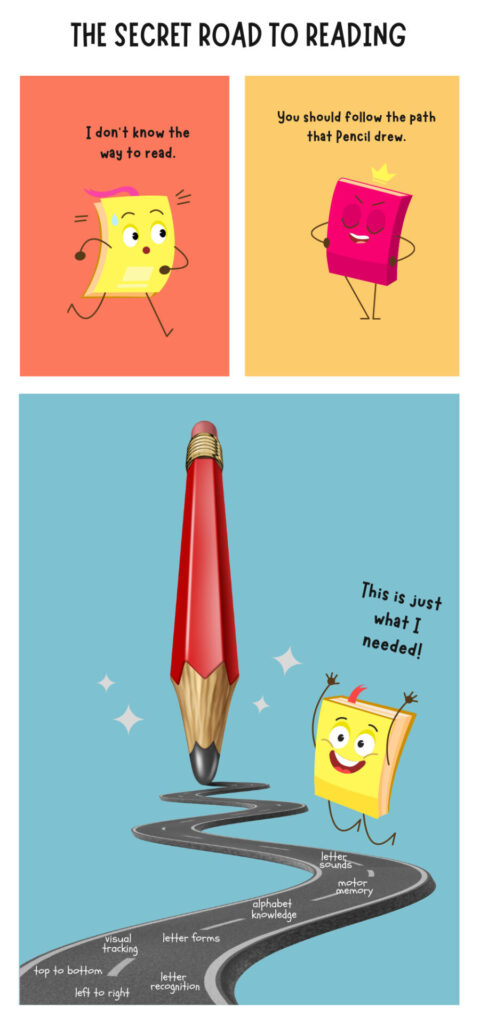Did you know that learning handwriting can actually enhance your reading skills? It’s all thanks to the amazing concept called neuroplasticity. Our brains are neuroplastic, which means they can change and grow as we encounter new experiences and overcome challenges.
Our brains consist of billions of neurons, special cells responsible for transmitting messages between the brain and the body. These neurons connect with one another, forming neural networks. The more connections we make and the more we utilize these networks, the stronger they become. Tasks that were once difficult, like handwriting, eventually become more manageable and even easy. What’s more, these strengthened neural networks can also benefit the learning of other new skills.
NEUROSCIENCE 101
Neurons are nerve cells that run throughout our bodies, comprising our central nervous system, which includes the brain, spinal column, and nerves that extend from the spinal cord to all parts of our body. While some neurons are tiny, measuring about a millimeter, others can be over a meter long!
When we practice handwriting, neurons communicate from our eyes to the brain, down the spinal column, and finally to our arm, hand, fingertips, and the rest of our body, adjusting our posture as needed. As we progress from infancy to adulthood, our brains grow larger and heavier due to the creation and modification of neural networks. When we learn a complex skill like handwriting, we generate new growth in our neurons, and with continued practice, we strengthen the neural networks, making writing easier.
Think of it like rain falling on a hill. At first, the water trickles down in various directions, but over time, it finds the most efficient path and starts forming specific channels. With each rainfall, the water naturally flows through these channels, making them deeper and more permanent.
HOW DOES THAT AFFECT READING?
Because the brain is plastic and adaptable, it utilizes the pathways developed through handwriting to benefit reading. Handwriting provides us with a larger, stronger neural network that supports the reading process
Here are a few ways in which writing supports reading:
1. Learning to write enhances visual processing of letters, making it easier for the brain to recognize letter shapes during reading.
2. Writing movements are stored in kinesthetic memory, which is related to movement patterns. This memory center, being the first to develop, provides long-lasting memories. When a child learns to read, they can draw upon this memory to remember letter formation and identify letters on a page.
3. Reading and writing use the same working memory system to process and analyze information. Working memory takes in visual stimuli and relies on long-term memory to interpret it. Both letters and words are processed through this system, and if it can access kinesthetic memory, it can identify letters and words faster.
4. Writing letters from top to bottom aligns with the visual movement pattern of reading, which starts at the top of the page and progresses downward.
5. Letter alignment and sequencing during writing reinforce the left-to-right visual tracking required for reading.
6. Writing is rhythmic and predictable, promoting writing fluency. This fluency leads to an automatic motor response, allowing children to focus more on reading the letters while writing them, enhancing reading proficiency.

Simply put, the more we write, the easier reading becomes! So, sharpen those pencils and grow some neurons!
